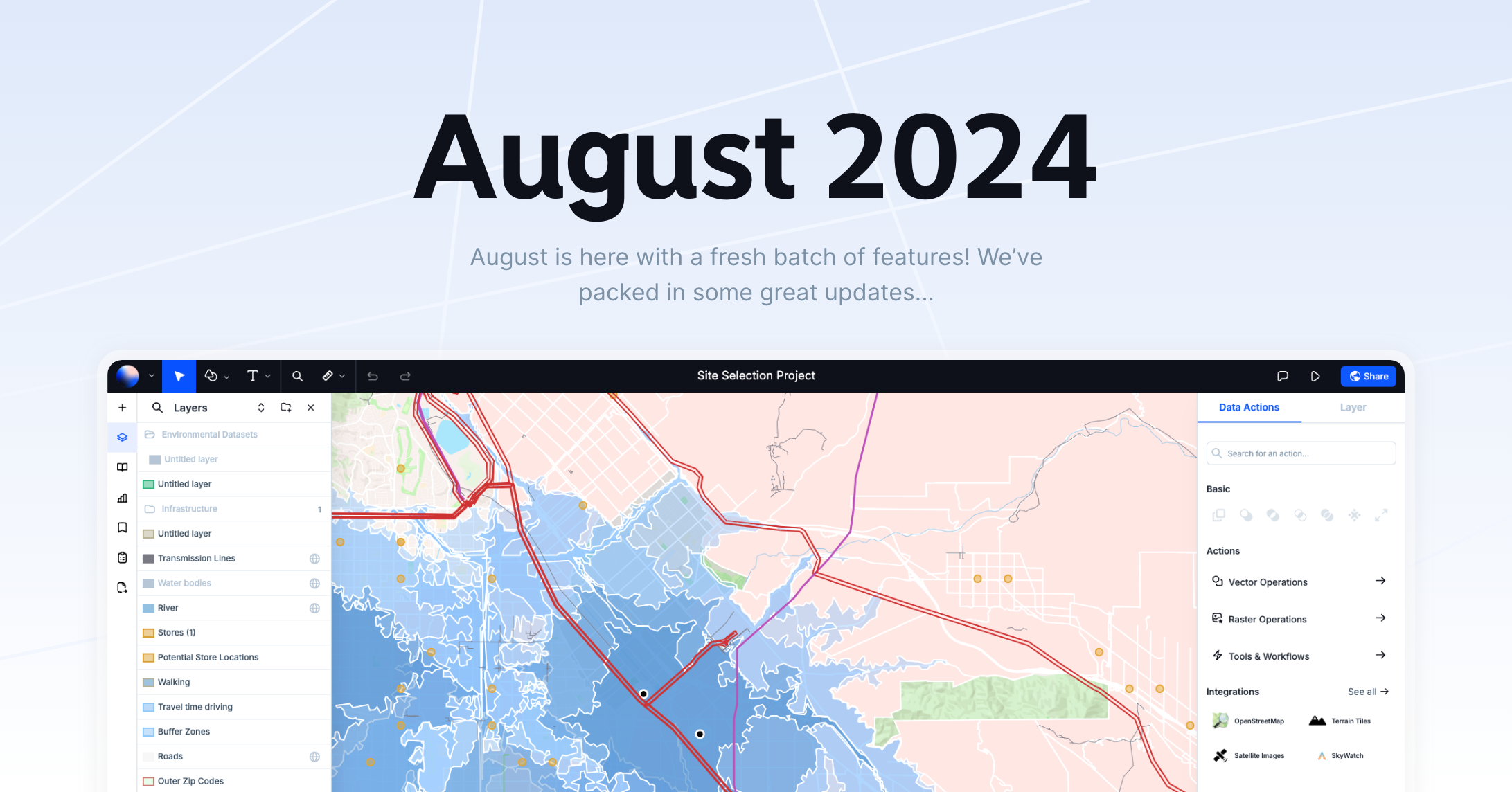Blog
Browse the Blog and customer stories to find what you need to succeed with Atlas.

Export Public Feedback on Maps to CSV
Collecting public feedback is essential for any project involving communities, but managing that feedback can be a pain. Introducing our new feature: you can now export comments from your maps directly to CSV or JSON files. This feature simplifies how you gather and organize feedback, making it easier to analyze and use.

GIS to Boost Community Involvement
Getting the community involved in local projects and decision-making processes can be a challenge. People want to have their say, but sometimes, they don’t know how or where to voice their opinions. This is where GIS (Geographic Information Systems) steps in, offering a simple and effective way to engage communities.

5 Ways GIS Transforms Public Participation
Modern GIS makes public data simple, visual, and interactive. Anyone can jump into a browser and instantly start exploring information that affects their community. No need for special tools or training. Just a click and you’re in.

How to Upload 3D Models to Your Map
Atlas enables you to upload 3d models and add them directly to a map. After selecting the layer, go to the Layer settings in the right side panel. Click on the "Select model" input field to upload your 3D model.

3D Models Now in Atlas
The 3D models layer allows you to add custom 3D objects directly to your maps in Atlas. These could be buildings, landmarks, sculptures, or any other physical object that you want to visualize on your map. Once uploaded, you can position, rotate, and scale these models to fit them exactly where they need to be.

Collaborate with Live Cursors
If you’ve ever used a shared document or design tool, you’ve likely seen live cursors: small icons that show where other people are working in real time. But the use of live cursors isn’t just limited to text or design files. Now, it's making its way into browser-based GIS (Geographic Information Systems) platforms, allowing teams to collaborate on maps just as easily as they would on a Google Doc.

How to Organize Layers in GIS
Layers are the backbone of any GIS (Geographic Information System) platform, and Atlas is no different. The way you organize layers can dramatically impact how useful your maps are. Poorly organized layers can confuse the viewer, while a well-structured layout makes your data clear and easy to interpret.

Release Notes: August 2024
Ever wished for more ways to level up your maps? Well, August is here with a fresh batch of features! We’ve packed in some great updates that’ll make working with Atlas even smoother and more fun.

From GIS to CAD
Geographic Information Systems (GIS) and Computer-Aided Design (CAD) are essential tools in various fields, from urban planning to civil engineering. Each system serves a unique purpose, but there are times when data needs to flow between them. This guide will walk you through simplifying the DXF export process from GIS to CAD.

How to Make a City Map Poster
OpenStreetMap (OSM) is a popular and freely accessible mapping platform. It's built by a community of mappers who contribute and maintain data about roads, trails, cafés, and much more worldwide. For many, it's the go-to source for up-to-date map data. This guide will show you how to go from OpenStreetMap to Illustrator with ease.

OpenStreetMap to Illustrator
OpenStreetMap (OSM) is a popular and freely accessible mapping platform. It's built by a community of mappers who contribute and maintain data about roads, trails, cafés, and much more worldwide. For many, it's the go-to source for up-to-date map data. This guide will show you how to go from OpenStreetMap to Illustrator with ease.

Comparing DEM, DSM and DTM
When working with geographic information systems (GIS), understanding the differences between DEM, DSM, and DTM is crucial. These three terms are often used interchangeably but refer to distinct types of data that represent the Earth's surface in different ways. This article will break down what each of these terms means and how they are used in GIS applications.
